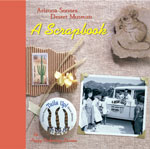
Extended Entries to the ASDM Scrapbook
Natural Habitat Exhibits
The Museum takes pride in its natural habitat exhibits, but for such an exhibit to be authentic it must contain plants specific to that habitat, these plantings present in natural densities and mixtures. The Desert Museum's Botany Department, in collaboration with those who oversee animal care, assumes this responsibility.
The planting and ongoing care of the plants is step one. But adding animal residents to a habitat poses a new set of considerations.
Plants may be needed by the animal residents for cover, but enough open space must be preserved to keep the animals visible. Some animals like to dig, thereby disturbing irrigation lines or plant roots. Certain residents, such as the bears, through their curiosity and activity, destroy vegetation. A random, natural look is desired in exhibits, but care must be taken that through plant placement and future growth animal escape routes do not develop.
Many of the captive animals consume certain plants or plant parts and planning for this is necessary. The javelina may munch on prickly pear cactus in their spacious enclosure. "Sacrificial" grasses go into the prairie dog area to be chewed down quickly. And the deer browse flowers and shrubs planted in their enclosure. These activities sometimes result in compromising the appearance of plantings, but the result is a natural, healthy, and complete habitat that tells a more accurate and ecological story. And this, after all, is our goal.